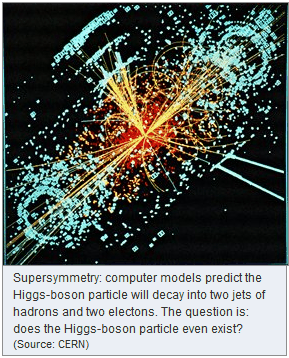It's time to stop searching for a grand plan that explains the Universe and accept that Nature is imperfect, argues Professor Marcelo Gleiser.
From the Australian Broadcasting Corporation:
 Einstein spent the last thirty years of his life looking for the unifying force, as did the brilliant pioneers of atomic physics, Heisenberg, Pauli, and Schrödinger.
Einstein spent the last thirty years of his life looking for the unifying force, as did the brilliant pioneers of atomic physics, Heisenberg, Pauli, and Schrödinger.
Following in their footsteps, I grew up a Platonist, fascinated with the idea of unification: the idea that all the forces of nature are but different expressions of a single force. So, I went to graduate school in England to pursue this intellectual Holy Grail and worked on superstring theories, the epitome of the unification dream.
But as the years passed I watched with growing apprehension as hundreds of my colleagues published papers on ideas so far-removed from reality that they couldn't (and still can't) be tested: papers proposing six invisible dimensions of space curled up in a ball a trillionth of a trillionth of a billionth of an inch; or proposing that there are an infinitude of universes out there popping in and out of existence throughout eternity, ours being only one of them; papers suggesting that whenever a measurement is made, reality forks into separate paths, each a different universe.
Were they playing intellectual games? Were they delusional, pursuing a fantasy? Had they lost their sense of commitment to their true vocation, the description of natural phenomena? Were they even physicists?
Surely, there are natural laws, and they reflect observed patterns of organised behavior. But are these laws the true blueprints of physical reality? Or are they logical descriptions that we create to represent it?
I realised that the order we see in Nature is the order we seek in ourselves. And this can be a dangerously misleading game to play.
More here.
